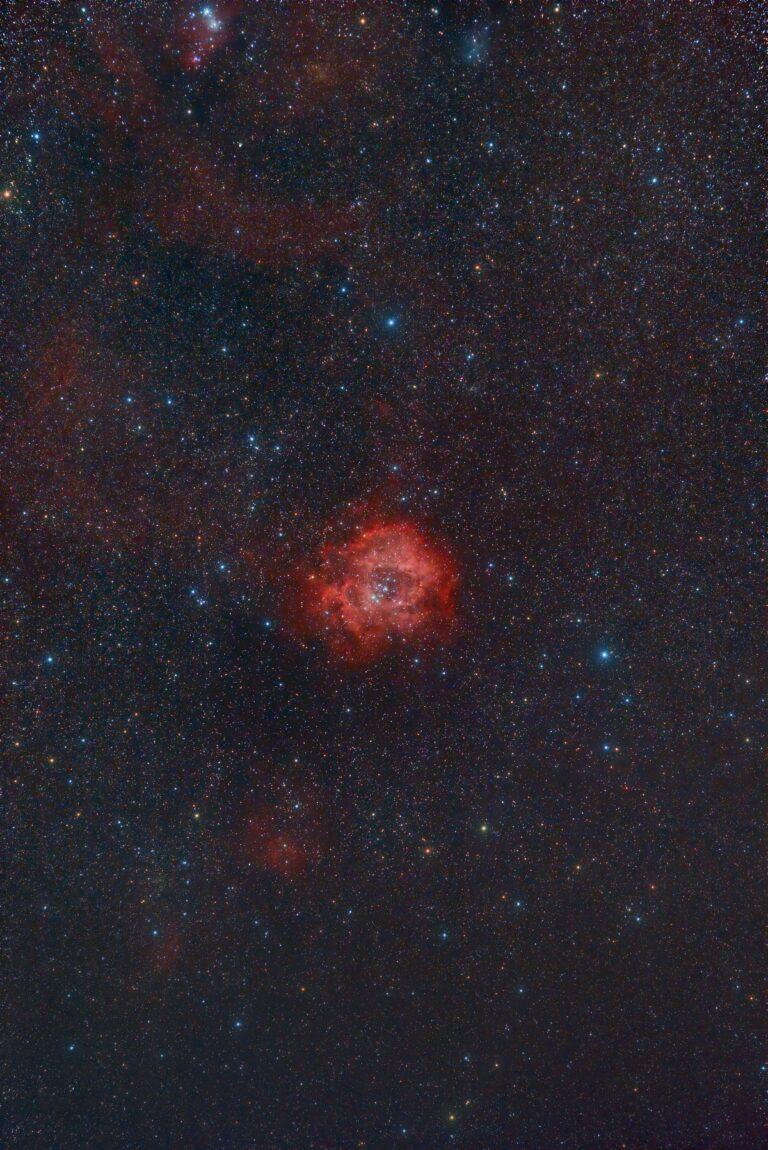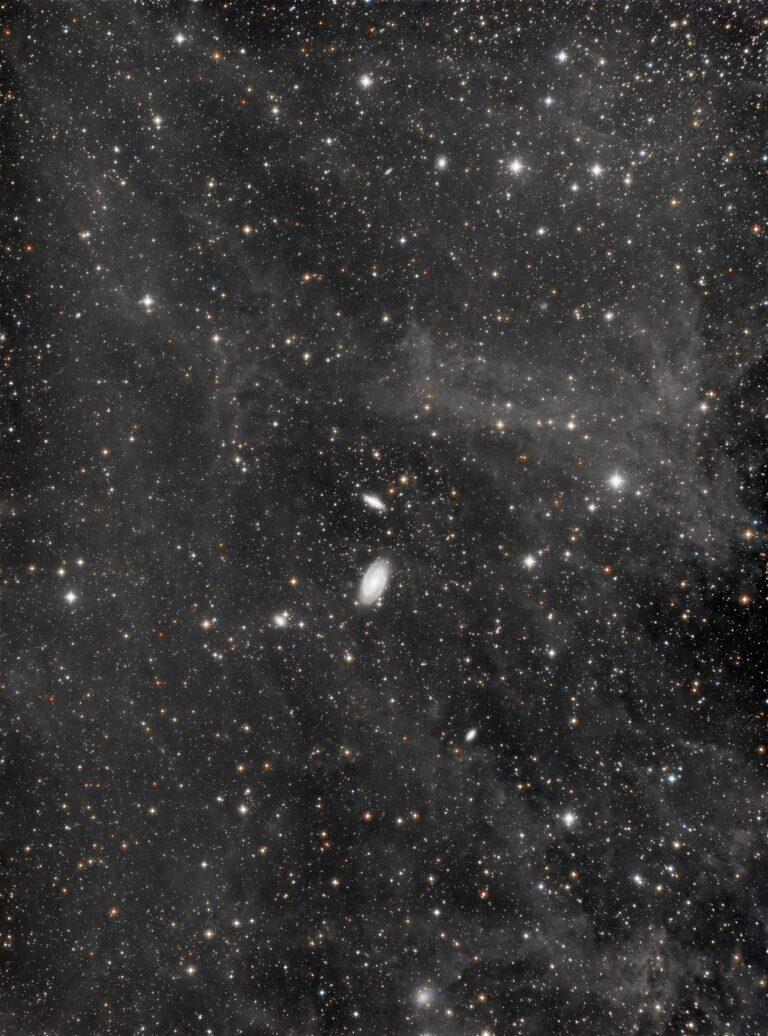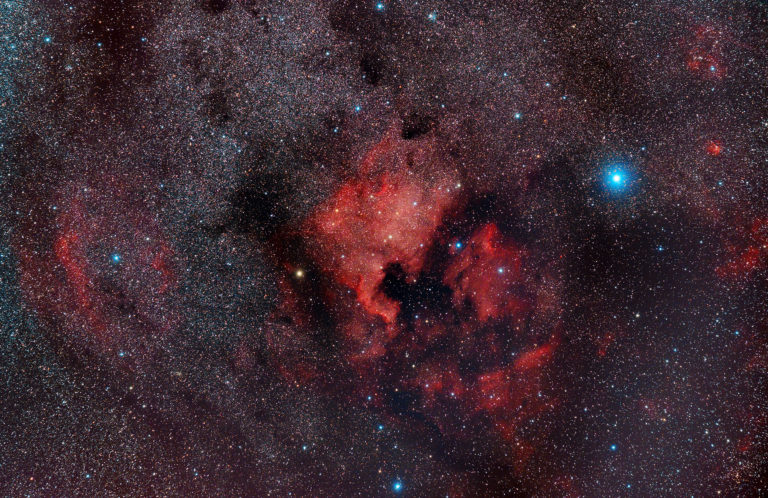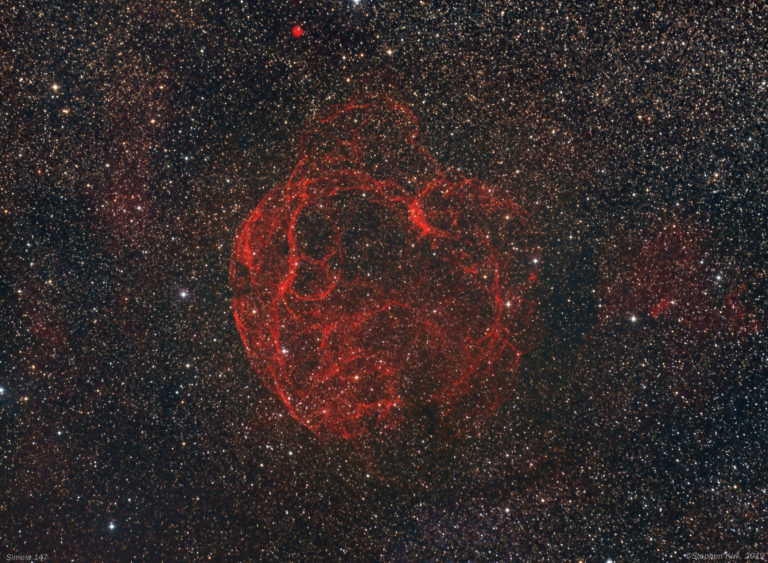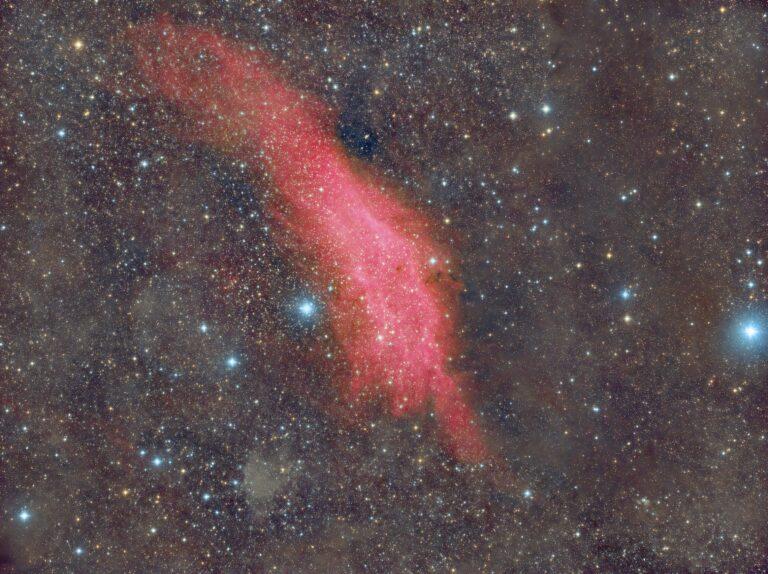Rosette Nebula In Very Wide Field Image taken with a Samyang 135mm DSLR lens and QHY268C Colour CMOS camera in January 25th 2023 when high to The South. A total of 30 x 120s exposures at F4. I used NINA software for image acquisition and processed in PixInsight. I wanted to set the Rosette in a very wide field so as to see the surrounding nebulosity. I have imaged The Rosette Nebula before with a FSQ85 telescope which can be found here. Annotated version of the nebula Finder Chart
The M81 and M82 galaxies in Ursa Major showing the background Integrated Flux Nebula. These are a well known and popular pair of galaxies and can be seen with binoculars. I’ve imaged them here in a very wide field with a DSLR camera lens – the Samyang 135mm connected to a G2-8300 CCD camera and filter assembly using Astrodon LRGB filtersThe cloudy dust that is visible is not passing cloud! Rather, it is the extremely faint dust and gas that exists in the space between the galaxies – in intergalactic space. Hence it is called the Integrated Flux Nebula or IFN. It is extremely faint and is only visible with very long exposures and integration times. Careful processing is needed not to inadvertently cut it out of the image. M81 and M82 and IFN Technical Data Imaged in my back yard in Nottingham in March 2020 with Samyang 135mm and G2-8300…
North American and Pelican Nebulae with Samyang 135mm lens and QHY268C Camera This is my first ever image capture with the excellent NINA software. I used my wide-field rig which consists of the Samyang 135mm lens and QHY268C OSC camera using an IDAS 2″ LP filter. The wide angle view brings out the North American nebula (NGC 7000) and The Pelican nebula to its right very nicely. There is also a lot of other background luminosity in the image.The image set is a modest 18 x 180s exposures captured in August 2021, all the data being binned 1×1. Pre-processed and processed in PixInsight with a few tweaks in Photoshop.
Simeis 147 (Sharpless Sh2-240) sometimes called The Spaghetti Nebula is a supernova remnant of a star that exploded forty thousand years ago. It sits across the border of Taurus and Auriga and is a huge object, about six moon widths across. It is located about 3000 light years away. Because of its extremely low surface brightness it was only discovered as recently as 1952. It is an exceptionally difficult object to observe visually and to have any hope of seeing it with your own eyes at the eyepiece requires extremely dark skies (Bortle 1), specialist filters, immaculate seeing and transparency and extreme dark adaption of your eyes. This rules out almost anywhere near civilisation. Personally speaking, I have never known any astronomer who has seen it visually. Even with photography it requires very long exposure times to bring out any detail. Simeis 147 Image Technical Data This image was created…
The California Nebula – NGC 1499 – is a vast hydrogen gas emission nebula about 1000 light years away in the constellation of Perseus. It is named as such because of its vague resemblance to the US state of California.It is a very large, faint and diffuse object, about four times the diameter of the moon. It is almost completely invisible visually without specialist filters and was not discovered until the advent of astrophotography in 1884. The nebula shines by reflecting the light of the bright star Markib. It shines red because Hydrogen atoms, when excited by nearby bright sources like stars, emit or re-radiate light at the 656nm wavelength which is in the red part of the spectrum to our eyes. The California Nebula Image Technical Data The California Nebula is so large that most telescopes cannot get the nebula in the field of view, nowhere near in fact. …

